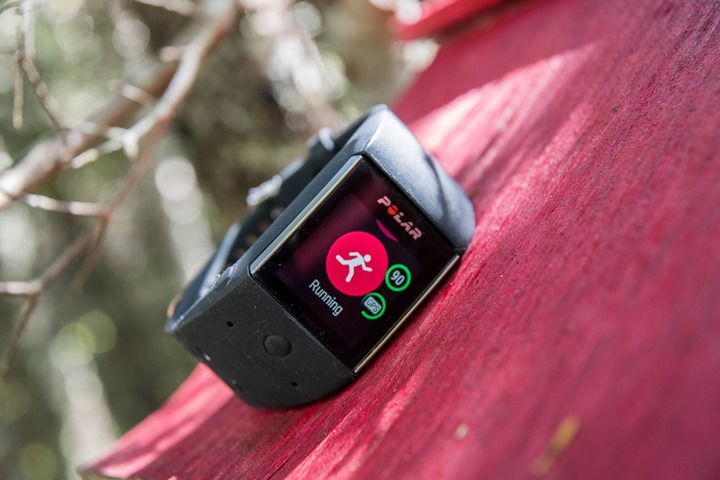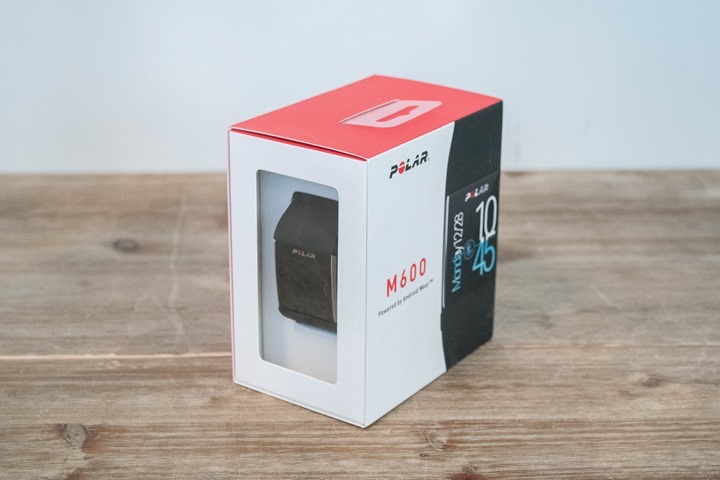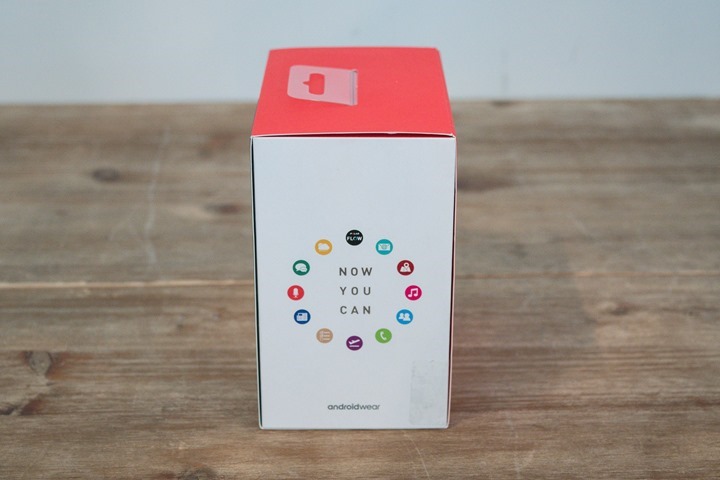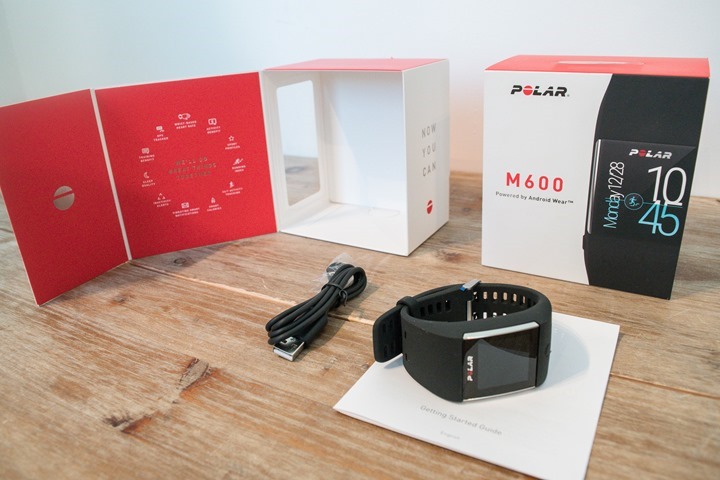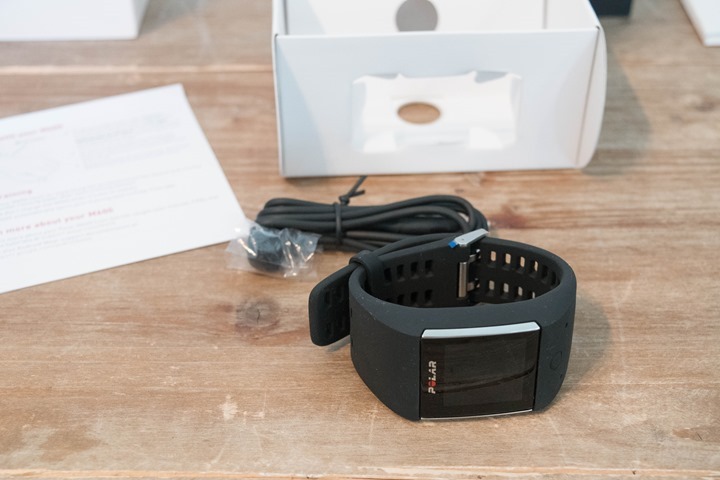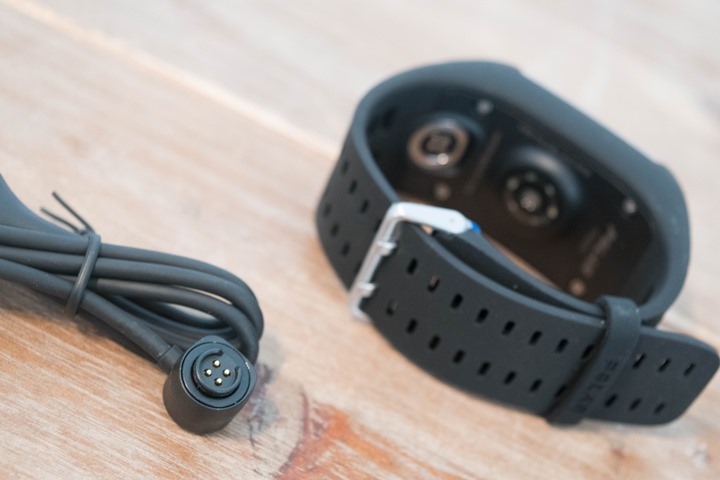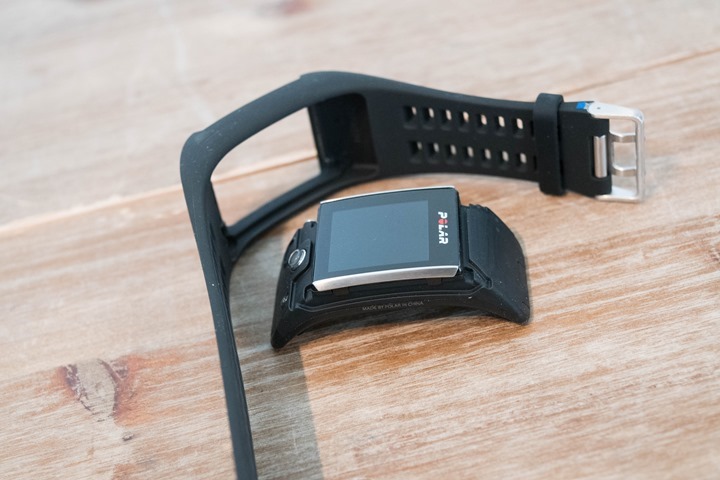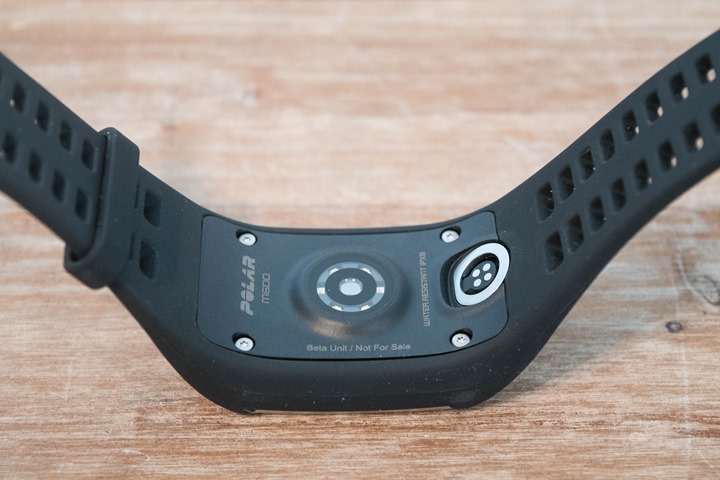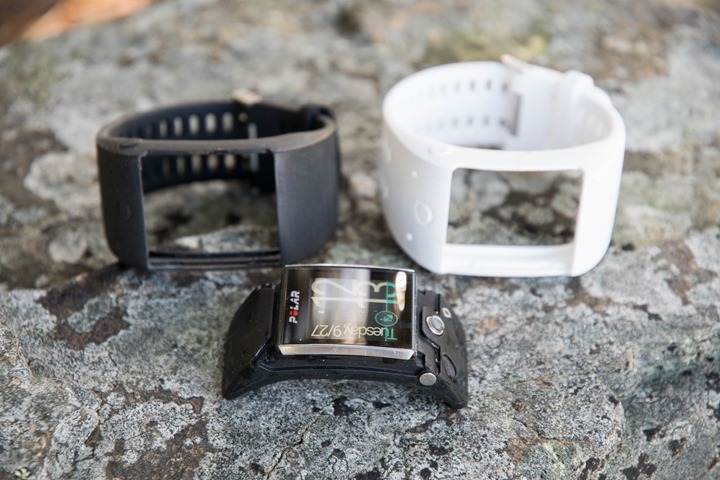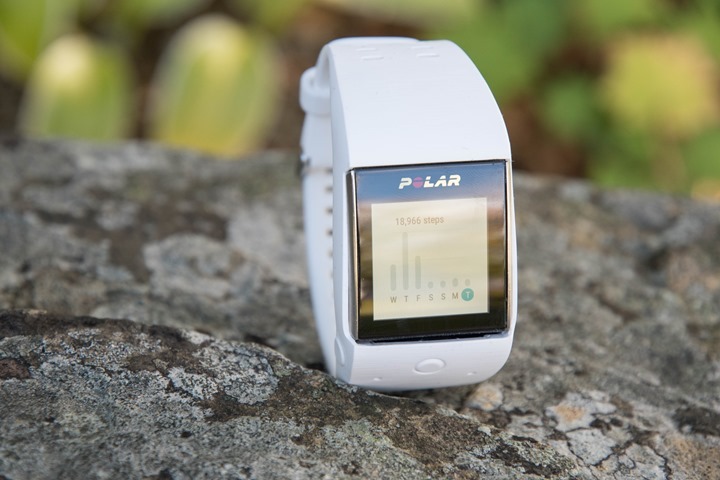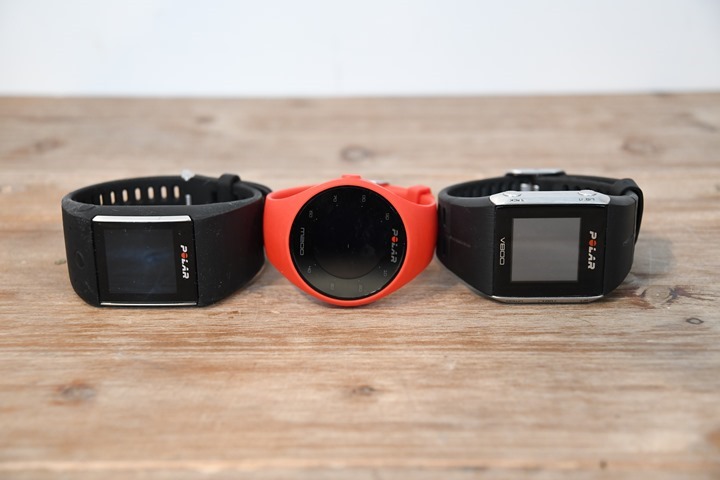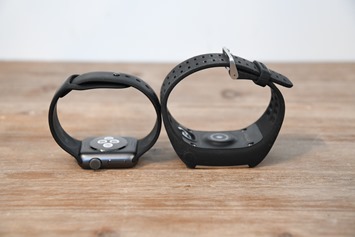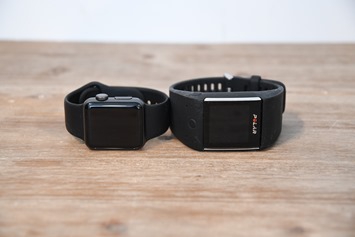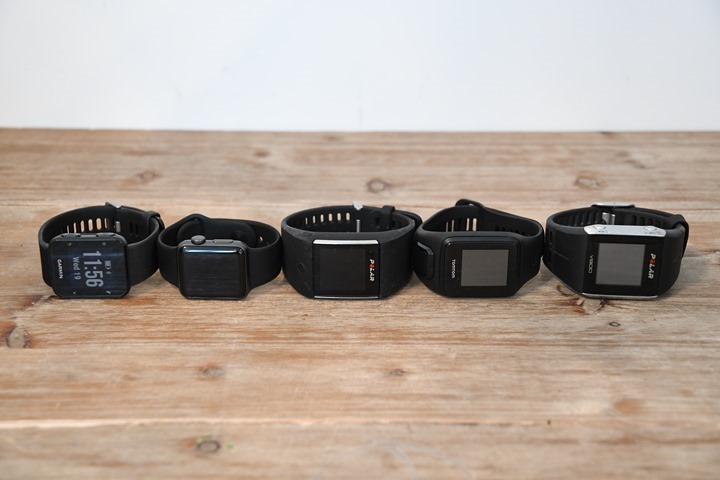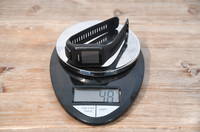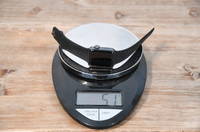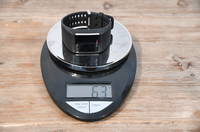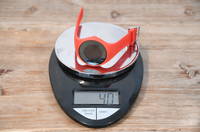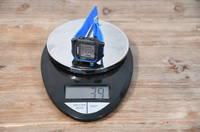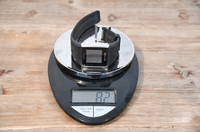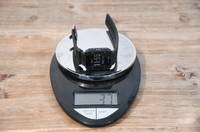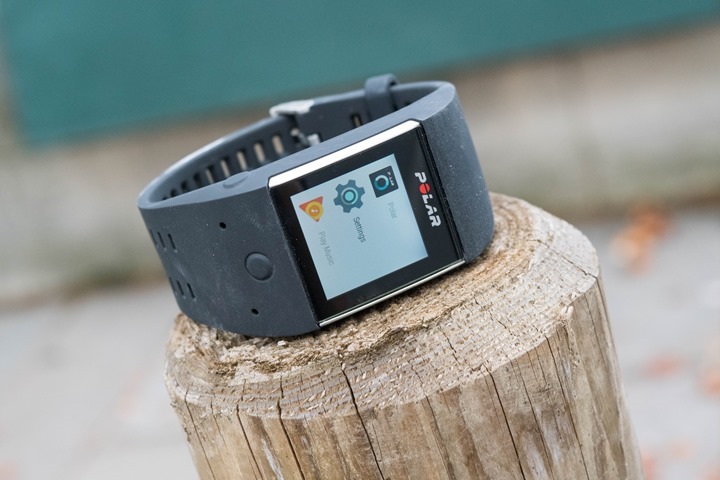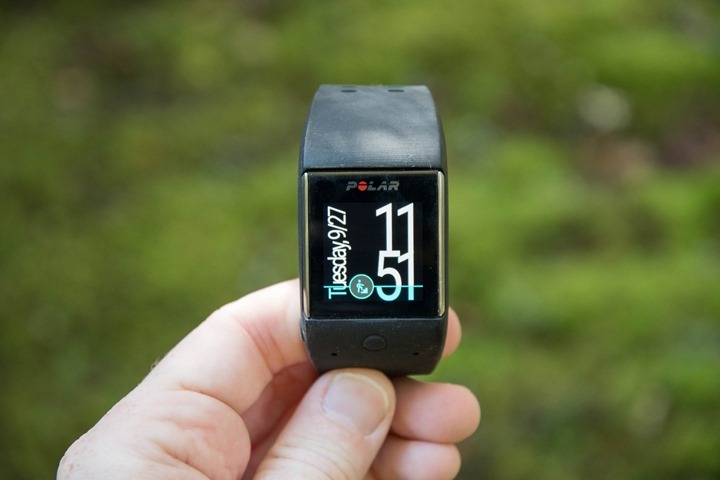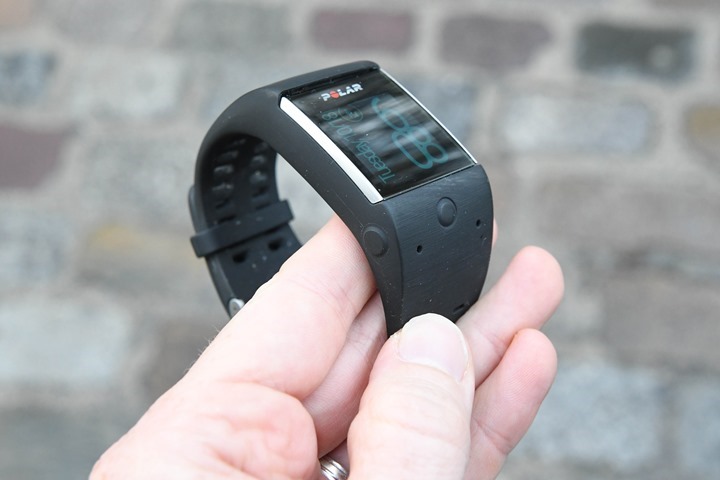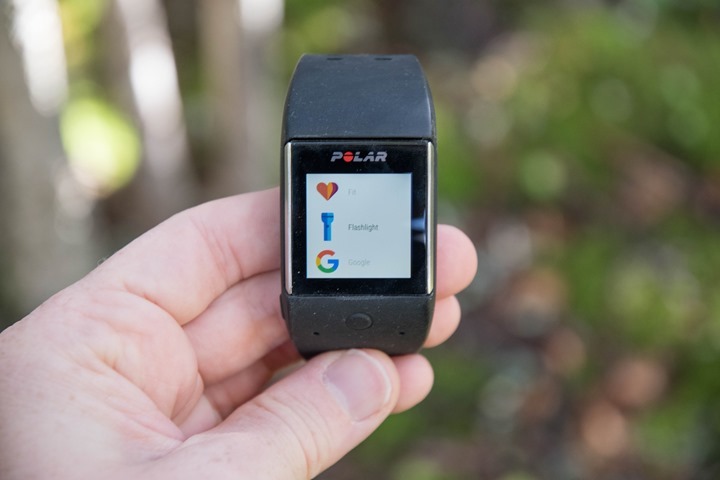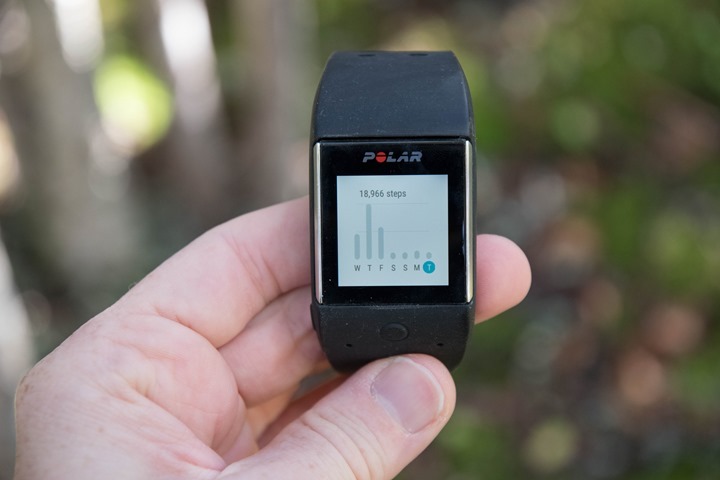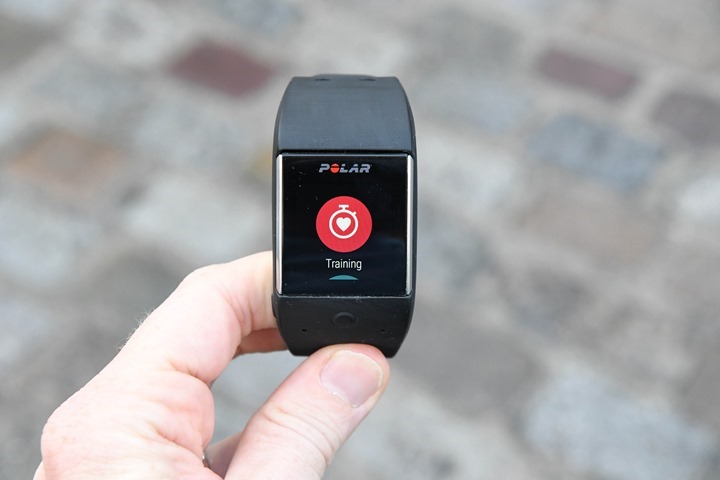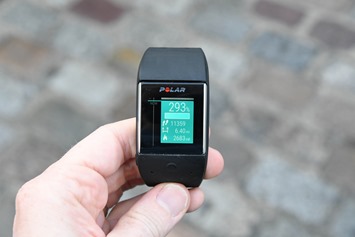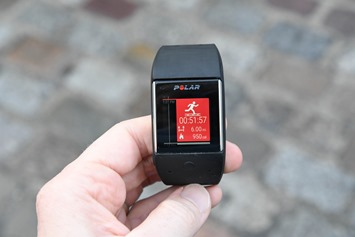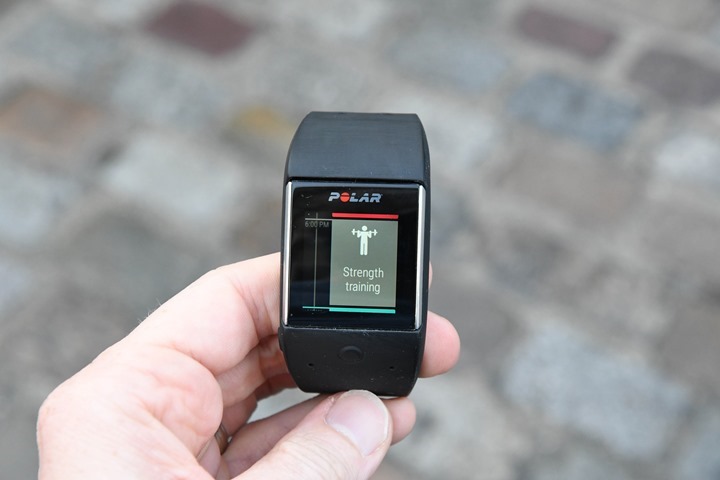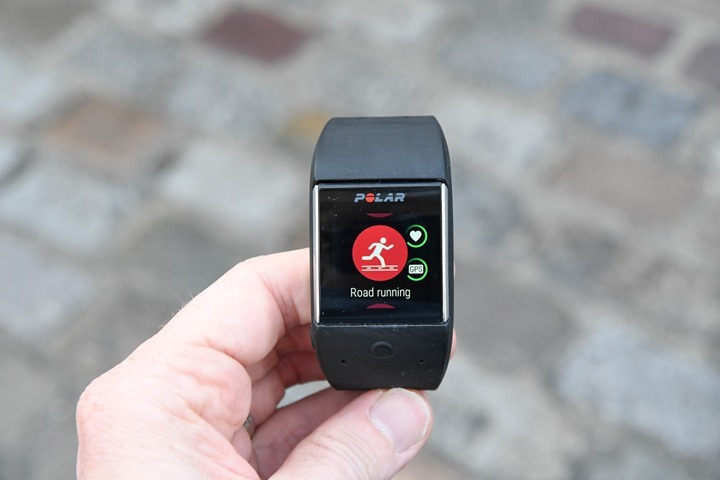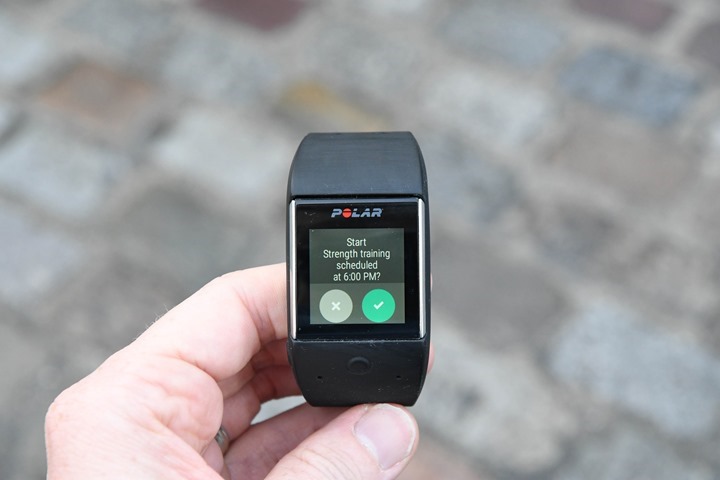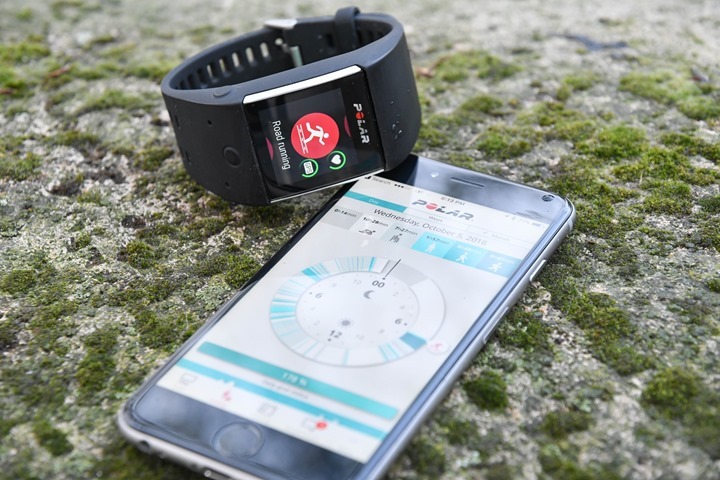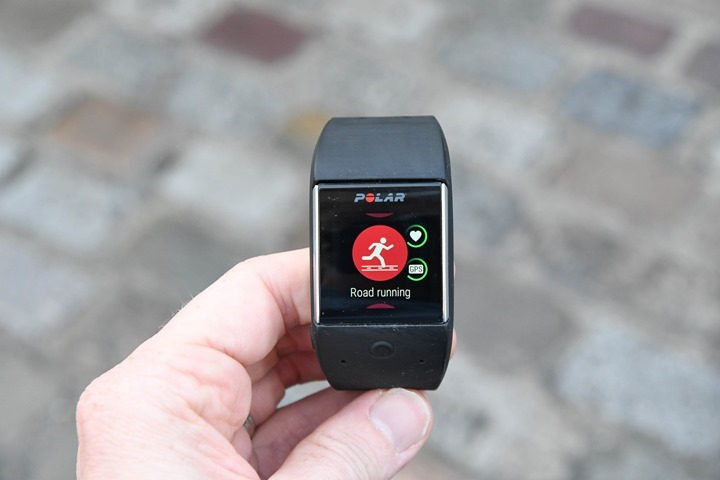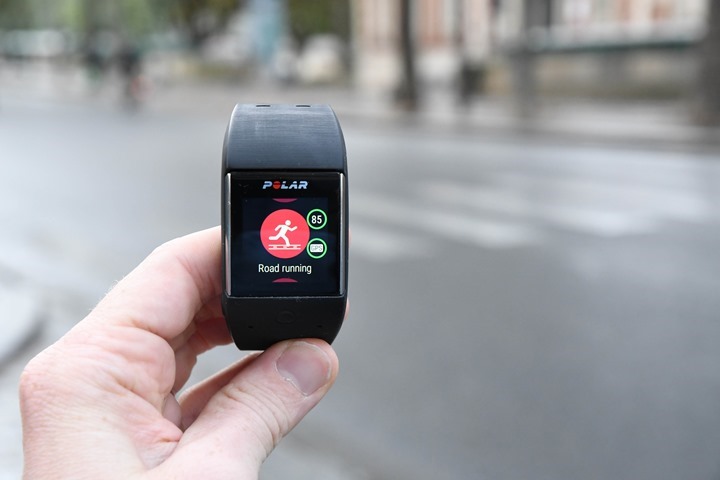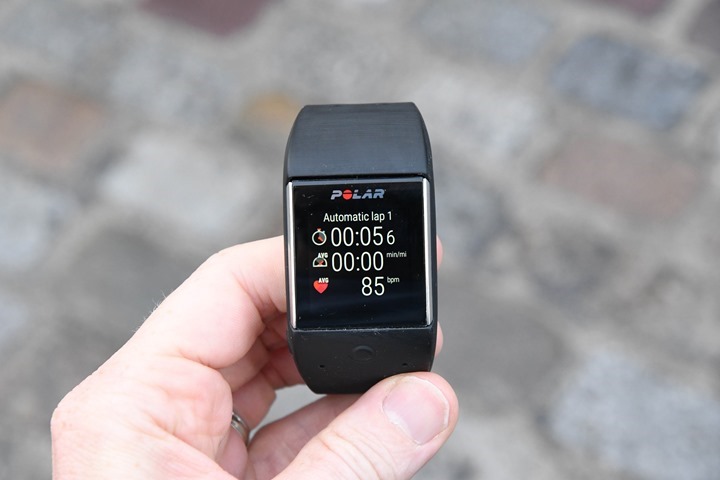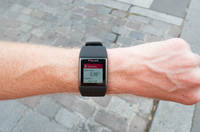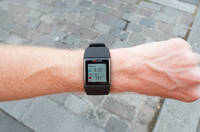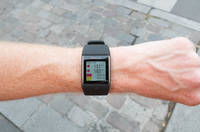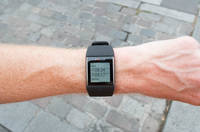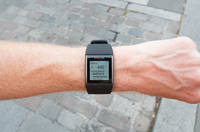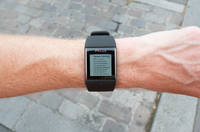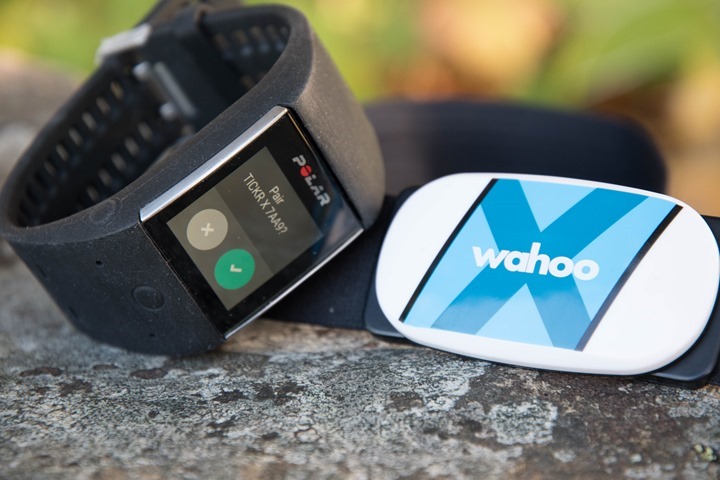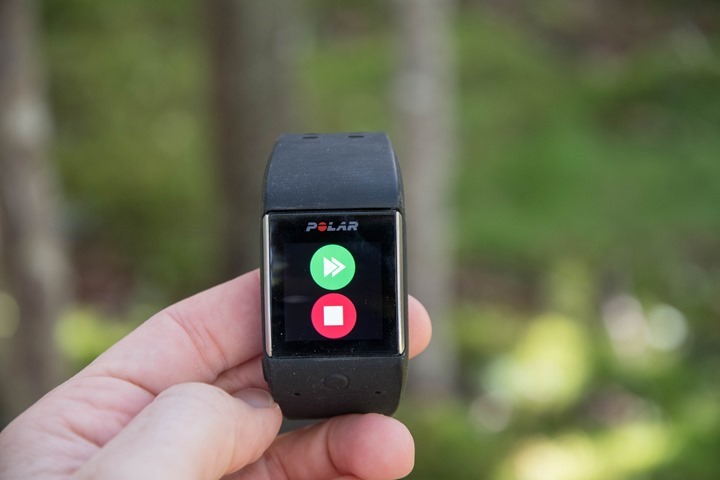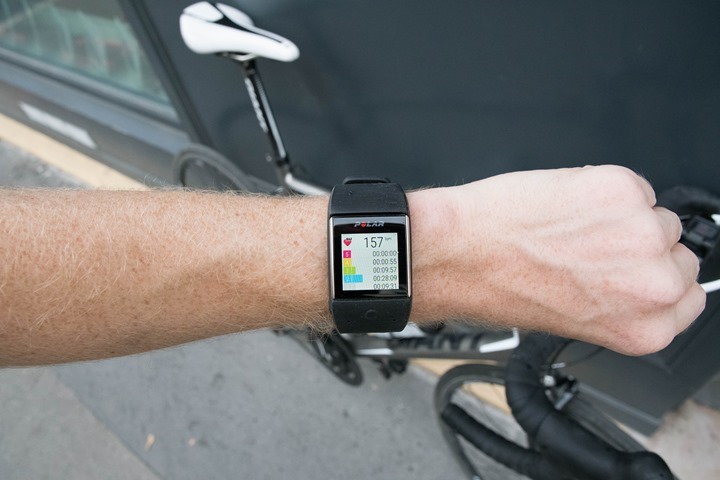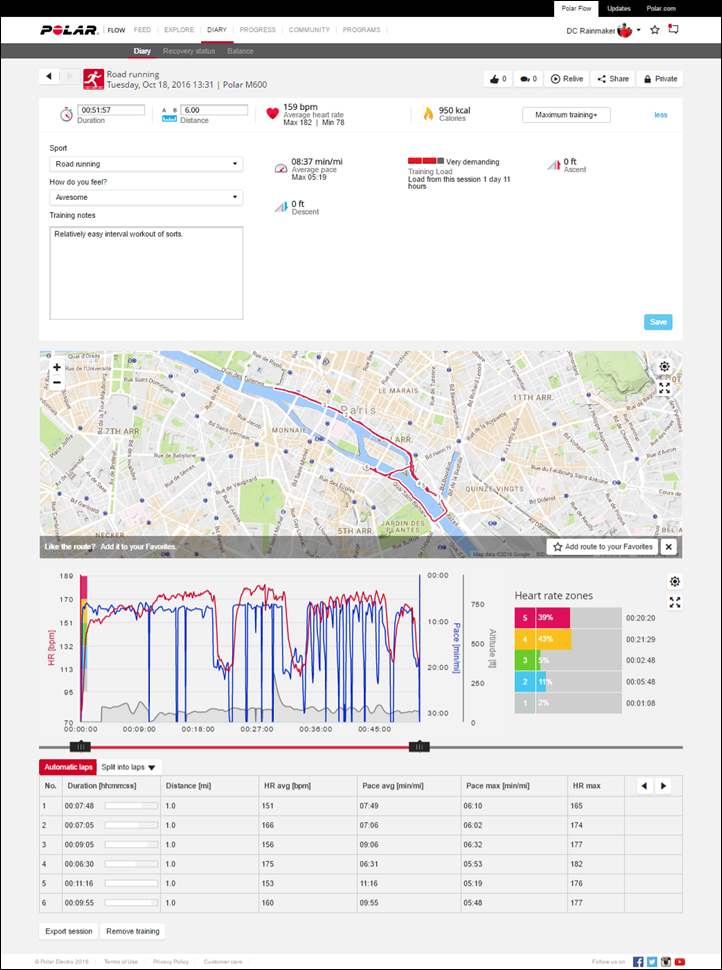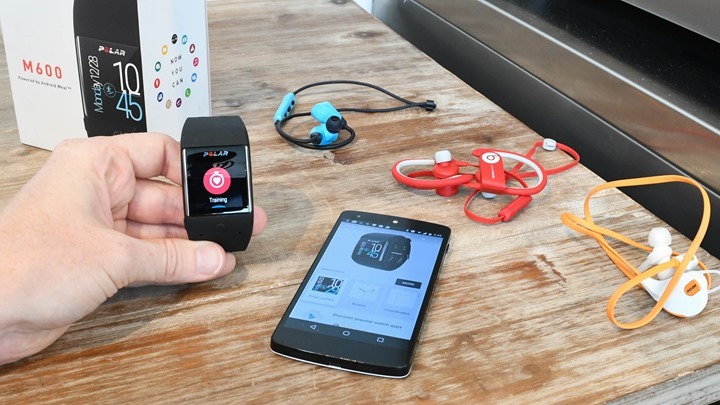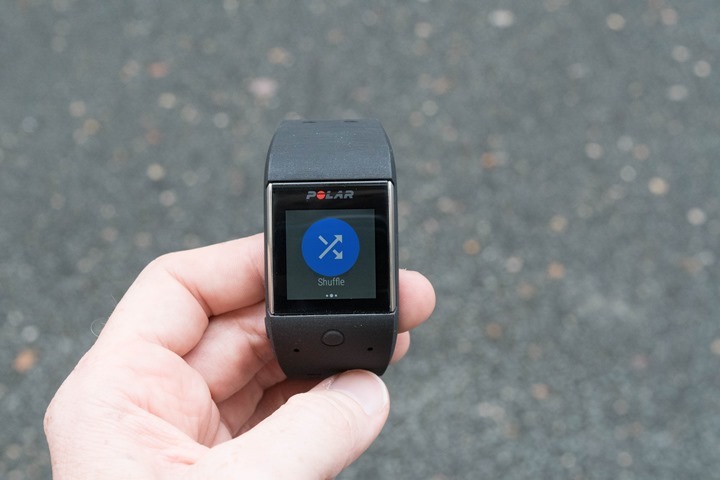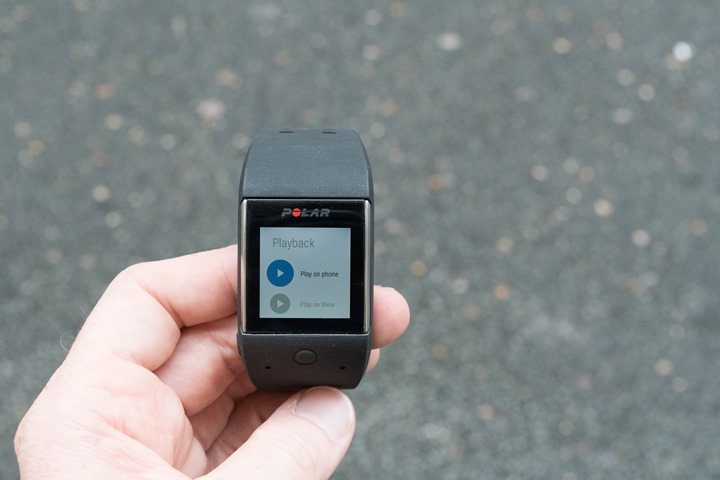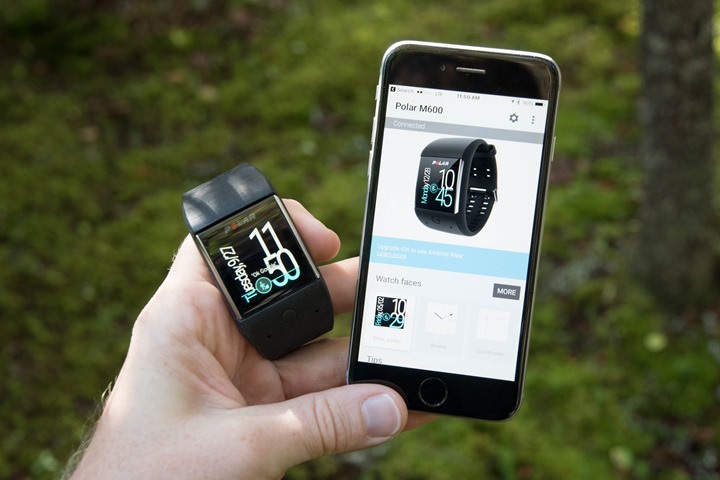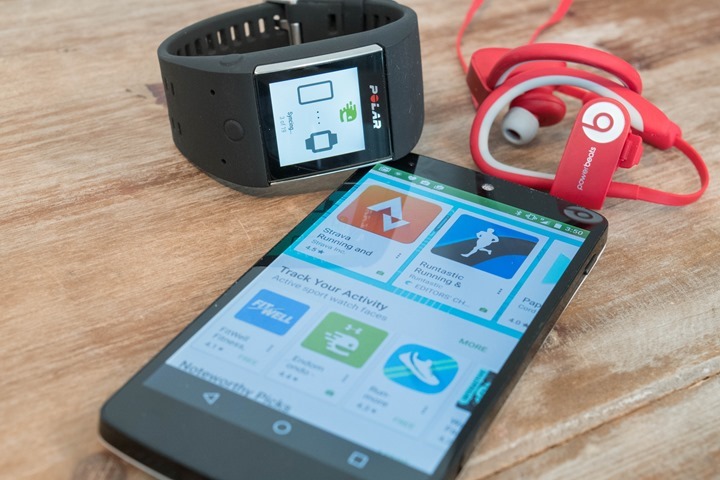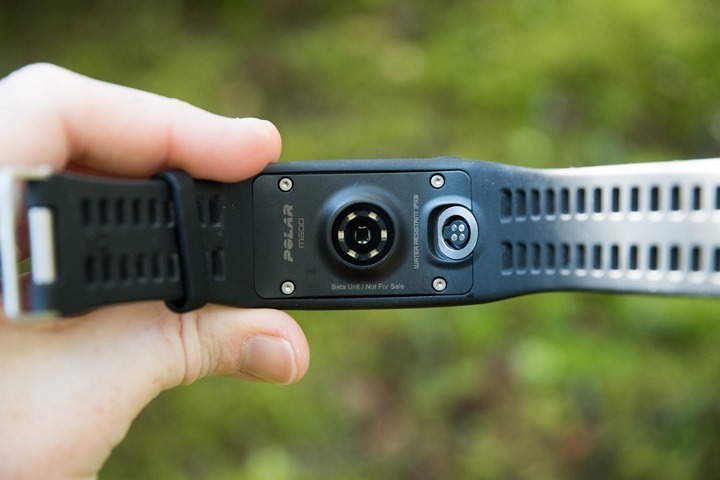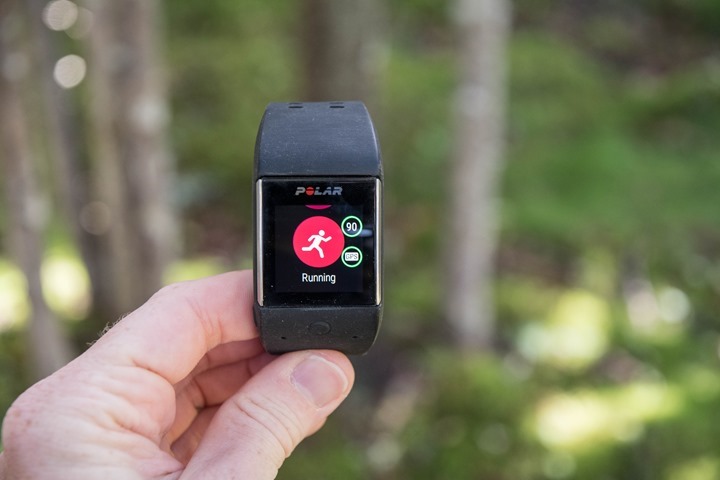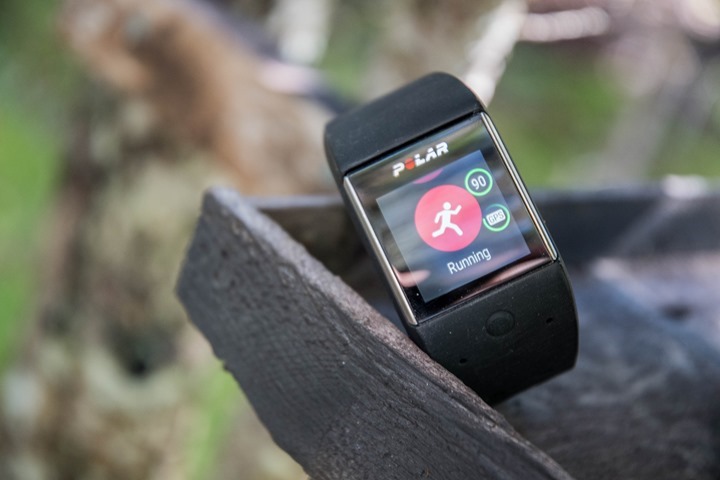It’s been a touch bit over two months since Polar announced their first Android Wear device, the M600 GPS-enabled watch. This running/lifestyle/not-triathlon focused watch was not only unique in Polar’s stable for being Android Wear, but for also including features like music playback via Bluetooth – which we haven’t seen previously from Polar. In was in effect a totally new direction for the company in terms of wearable devices.
I’ve been using the watch since that announcement (and actually, even before that). The trial unit they sent over in late July was initially loaded with beta software, though it has long since been updated to final production software. It remained final production hardware throughout. Once complete, I’ll plop it in a box and return it to Polar (in dark and cold Finland), as I normally do with test devices.
I’ve been using the M600 with both iOS and Android phones, so I’ve got a pretty good idea of where it works well…and where it’s not so awesome. With that, let’s begin!
Unboxing:
Let’s crack this unit open!
The first thing you’ll notice is that it does have some Android Wear goodness on the box:
From there you’ll go ahead pull the box out of the sleeve, then fold out the front door:
Inside you’ll see the M600 sitting right there waitin’ for ya. Grab that out, as well as the charging cable and the very small manual – and here’s what you’ve got:
The manual is pretty straight-forward and basically just tells you where to place the watch on your wrist, and not to try and use it as a fishing rod. Roughly.
Then you’ve got the charging cable. This is actually the same charging connector as the V800, though the V800 clip doesn’t work here.
It just uses a USB connector on the other end, so you can plug it into any USB port you can find to get some juice.
Then finally, the watch itself:
The most notable item being the optical HR sensor on the back has changed from other Polar unit optical HR sensors. Polar says this is largely just in their quest for finding the most accuracy. I personally don’t have a problem with that, since past Polar optical HR sensors haven’t been terribly awesome. So anything that improves that…I’m all for!
Lastly, it should be pointed out that the unit comes in both a white and black band version. The bands can be removed and swapped around.
Here’s how it looks with a white band:
Note that the above white-band was 3D printed, as I don’t have a final version of that band, so there may be some minor imperfections there. The black-band is final (which is what I’ve been using).
Size Comparisons:
So how does it measure-up against other units in the same category or by Polar themselves? Well up above is the M600 (left), the M200 (center), and the V800 (right). You can see it’s roughly in the same ballpark as the V800 from a front facing standpoint.
But what about taking the Android Wear based M600 and comparing it against the Apple Watch Series 2? Ask and you shall receive!
As you can see, they are quite different in size. The Apple Watch is a heck of a lot smaller. Then again, Apple has access to manufacturing scale and efficiencies that quite frankly Polar doesn’t. Though battery life the two units are pretty similar. Polar says about 48 hours when paired with an Android phone, and about 24 hours when paired with an iPhone. I found if I left the screen off except gestures, I was getting closer to 36-40 hours paired to an iPhone. Or about the same as I get on the Apple Watch. Thus, I’d call that aspect a wash.
Next, to line it up to some other watches in the space, most notably the TomTom Runner 3/Spark 3 (which has music and GPS & optical HR), you’ll see that it’s a big bigger than that.
Lastly, here’s the weights of a boatload of watches. They are:
TomTom Spark 3/Runner 3: 48g
Apple Watch Series 2: 51g
Polar M600: 63g
Polar M200: 40g
Polar V800: 82g
Garmin FR35: 37g
Garmin FR25: 39g
And…the gallery of those!
Now the challenge with the M600 is that quite frankly it looks bulky with a side order of ugly. I have yet to meet anyone that thought it looked sleek and pretty. The second question out of anyone’s mouth that sees the watch (after asking what it is), is: “Hmm…it’s….kinda….bulky, no?” Always with those slow pauses in between. Always.
On the flip-side, it’s also one of the faster Android Wear watches in terms of responsiveness. So even though it may not be the sexiest thing on the dance floor, it can definitely throw down the moves in good time when it needs to. But I’ll cover that more later.
The Basics:
When it comes to the basics of the watch, it’s important to understand that it’s really Android Wear first, Polar second. Aside from the default watch face, one could easily thing it wasn’t a Polar watch at all. It acts like any other Android Wear watch until the moment you press the front-facing button, which launches the Polar training app.
Otherwise, for aspects like looking at smartphone notifications or checking the weather, that’s all stock Android Wear functionality. Same goes for the music player, stopwatch, and Google Fit. About the only thing outside the training app that you’d see that’s different is if you use the default Polar M600 watch face, which includes the Polar daily step totals and goal.
The left-side button meanwhile, is for accessing the Android Wear app launcher:
It’s here you can open up 3rd party apps (Android phones only), or the default Android Wear apps (like Google Fit, Flashlight, and others).
Google Fit is where you can get further metrics about your daily activity. Though, it’s somewhat of a duplication of what you’d get through the Polar Flow app aspects. With Google Fit you’ll see more graphs on the watch, whereas with Polar’s Training app (and watch face) you get more information about today. Whereas then on Flow online you’ll get more details beyond today.
So what happens once you press that front button? It’s like entering Polar’s front door.
And the moment you do, it becomes similar to other Polar wearables. You’ve got this familiar up/down interface for accessing things like ‘Training’ or ‘My Day’, as well as a manual sync button. That’s it though.
My Day is where you’ll get an overview of your daily activity. It shows you any specific workouts you’ve done, as well as your daily step totals. It’ll also show you scheduled workouts, per Polar Flow (that’s the web service you can sync to).
Meanwhile, the only other option left (Training) is where you execute workouts from. It’s here that you’ll choose which sport to start the workout within:
It’ll also prompt you for any scheduled workouts that you have that day:
Once you select a workout, depending on the type, it’ll start looking for heart rate (optically) and GPS (if outdoors). Which, is a perfect transition to the sport mode section.
Sport Modes:
If there’s one thing that Polar’s really nailed it’s the widespread availability of sport modes across their different devices. Even the budget-focused M200 that was announced a few weeks back has all the same sport modes as the M600, which has all the same sport modes as the V800. The only caveat to that statement being multi-sport modes (i.e. triathlon), which only the V800 has. Still, I like it when companies don’t artificially restrict software sport modes on lower hardware just for giggles.
The only downside here though is that Polar only allows you to configure/add/change these sport modes on Polar Flow, so you’ve gotta go online to do that. It’s here that you can select which sport modes, and the specific data pages within those:
You’ll click on a given sport to customize it or the data pages within it. This includes settings like automatic lap options, heart rate zones, and pace/speed metrics.
Note however that on the M600, you can have automatic lap, but *cannot* at this time have manual lap.
On the data page front, you can customize up to 8 pages, each with 1-4 data fields.
It’s on Polar Flow that you can also setup training plans. These plans include things like plans for 10K races, which will include not just running workouts, but also core workouts in between the running days. Further, it’ll populate the calendar online as well as the scheduled workouts on your wrist. The grey ones below are the scheduled ones. The red ones are the completed ones.
Once you’re done with all your tweaking of things, you’ll need to head back to your watch and ensure both the Android Wear and Polar Flow apps are open and that they then sync updates to your watch via Bluetooth Smart. Otherwise you won’t see those changes.
Upon readiness to start a workout, you’ll press that front-facing button and select a sport. In my case, we’re gonna choose running:
You’ll see above that it shows the GPS and HR icon as searching. At this point it’ll be looking for satellites using the GPS chipset, while concurrently using that ground optical HR sensor on the back of the unit to find your HR:
Once it’s gone both done, it’ll show a completed green circle. I can’t make it anymore clear: Do not start your workout until both of these icons are ready. It’s incredibly difficult for units to recover and find either/or once a workout has begun, and doing so will only lead to sadness and dead kittens. Trust me.
The good news is that the GPS find signal very quickly, usually in just a few seconds. And the same is true of the optical HR sensor. I’ll discuss accuracy of both in a later section.
Upon dueling green circle completion, you’ll press the sport mode to start recording, which will then take you to your data pages.
Here’s a quick gallery of some of the data pages and how they look:
Now it should be pointed out you have a few options for whether the screen stays on permanently or turns on/off based on gestures. If you leave it on, it burns through more battery than if you have it gesture based. I’ve tried both ways, and generally prefer keeping it on, so that I don’t have to wait each time I raise my arm.
With the gesture option, the screen will turn off until you raise your wrist, at which point the screen will illuminate. But it’s just not as quick to react as something like the Apple Watch is, so it’s a bit delayed. That can be frustrating in certain situations.
In order to change data fields, you’ll just swipe left and right on the screen. I’ve found that works just fine and dandy, even in rain. In fact, I filmed this video in the shower one day to demonstrate just how well the screen works in watery conditions:
The biggest downside of the unit right now is the lack of manual lap option. It really sucks. You can either have no laps, or automatic laps. Automatic laps are based on either preset distance, or, section of a structured workout (i.e. interval workout). Polar has hinted that this might be in the cards down the road through a firmware update, but nothing has been promised and nothing has happened to date.
I’ve also used the unit in both hiking as well as cycling. In terms of the menus and such, it all works the same way there. The only notable item is that it does *not* pair to any Bluetooth Smart cycling sensors. It can only pair to a Bluetooth Smart heart rate strap, which it will prompt you about if it finds one in range:
The other challenge with cycling is that if you leave it on gesture based (the screen), then it’s awfully wonky to get to display the screen, and it’s really ideal. Still, if you only ride sparingly, then it’s probably not a huge deal to you.
Once you’ve finished your workout, you’ll swipe to the left to find the pause screen. This allows you to pause a workout temporarily, or if you hold it down, it’ll allow you to save the workout.
After which you’ll get summary information about the workout:
To sync this back to Polar Flow (that’s their training log website), you’ll again need to ensure the Polar Flow app is open, and in the case of iOS, also the Android Wear app (on Android phones, it’s not required). Afterwards, you’ll find the map and stats displayed on the Polar Flow site for all the world to see:
Do note the lack of elevation data (either by the watch itself or corrected on Polar Flow). A bit of a surprise of a $300 GPS watch.
With sport modes all set, let’s take a quick diversion to talk about music and Android Wear, before wrapping up on the accuracy pieces (HR & GPS).
Music:
The M600 joins the ever-growing list of devices that can store music onboard. At this point that really only leaves Garmin and Suunto as fitness device makers that don’t have onboard music storage. With the M600, it has 4GB of internal space, but that only leaves 2.6GB of usable music storage space. It’s enough though for most folks if they compress files appropriately to get a fair bit of music storage out of it.
The unit pairs with Bluetooth headphones. I’ve tried a few, though in my testing I mostly used these Powerbeats ones. It’s not so much that I recommend them (I’m fine either way), but rather just that I grabbed the red ones because I could easily spot them inside my backpack of wires. Sometimes it’s the simple things in life….
In theory you can use any Bluetooth headphones (such as these $20 MPOW ones I often use, or even something like a JBL portable Bluetooth Speaker). Doesn’t really matter, as long as it’s Bluetooth audio. From there you’ll get your music machine in pairing mode, and then dive into the Android Wear Bluetooth menus to pair it up. Quick and easy. And in fact, that’s one of the strengths here of Android Wear, in that they’ve got more resources to validate audio compatibility than a smaller company like TomTom, which has to validate individual Bluetooth headphones unit by unit for their compatibility tables.
But there’s also a downside to Android Wear for music: It requires Android.
Unlike the TomTom Spark series, the M600 will ONLY transfer music from an Android phone/tablet. You CANNOT use the music player functionality on iOS. So, it’s Android only for now.
Overall I didn’t find any issues with music playback on the unit, either while running or hanging around. At the same time, I’m not a huge fan of running with music – so my musical playback time was limited both by that, as well as the fact that once it was paired to my iOS phone, I couldn’t do music anymore (it wipes the unit if you switch from Android to iOS).
Android Wear Notables:
For some people, a major benefit of the M600 is being Android Wear. This platform means that multiple hardware vendors can take Google’s ‘off the shelf’ (roughly) software for running a smart watch, and in turn run their apps on top of it. This theoretically saves them the time/effort of developing such a platform, but more importantly it gives them a platform of their own for 3rd parties to easily develop on.
Said differently: Instead of Polar having to develop an equivalent to Garmin’s Connect IQ (or Pebble’s app platform, or Apple’s WatchOS platform), they’re able to use Android Wear to instantly have a platform that developers can create apps for. And in many ways, that works out quite well for companies like Polar, Sony, and Motorola.
However, there are some limitations. Specifically on what phone you have. Now unlike the Apple Watch, Android Wear is actually cross-platform. Meaning that you can use your Android Wear device (including the M600) with both iOS and Android devices. Whereas the Apple Watch only works with iOS devices. So that’s great for consumers.
What’s not so obvious though is that the experience between using the device paired to a phone on Android versus using it on iOS is dramatically different. So different in fact that I wouldn’t recommend it for iOS users.
I’ve used it on both platforms. I’ve had it paired for weeks to an Android phone, and then the rest of the time to an iPhone (so about a 30/70 split, in favor of the iPhone). Still, we’re talking over a two month period now I’ve been using it on one platform or another. I’m basing all my iOS concerns on final hardware/software with respect to the M600.
When paired to an Android phone, it generally works pretty well. And all the features are available. For example, I can install 3rd party apps on the phone easily, as well as have deeper integration with voice control. Further, the smartphone notifications work virtually 100% of the time. Also, I can easily place music on the device for playback (which I can’t do at all on iOS).
But on iOS? Not so much. There’s currently no method to install *any* 3rd party apps, and the voice control is rather limited. But perhaps more important is that the sync connectivity is at best flaky, and at worst totally unusable. That’s because the M600 isn’t seen as a normal Bluetooth Smart notification device that the iOS Notification Center can utilize. Rather, all communications has to go through the Android Wear app. So that app must *always* be running in the background.
Except the problem there is that the connection constantly times out. If I go out of range of my phone (even just to the bathroom), it’ll lose the connection. That’s fine. But what’s not fine is that it won’t ever repair that connection by itself. Instead, I have to manually do it. Every…single…time. It just gets old, every…single…time.
So again, here’s the list of things that don’t work on iOS:
– No method to playback/transfer music
– No method to install/use 3rd party apps
– Limited Google Now commands
– Crapshoot on smartphone notifications being functional
Now some of these things may be addressed down the road with Android Wear 2.0. But that’s a very unclear and fuzzy road. Said release was just delayed into ‘sometime early next year’ (it’s already been officially delayed at least twice). And while Polar has promised to update the M600 to Android Wear 2.0, they haven’t set about any timetable for doing so. If I had to wager a small bit of cash, I’d even bet it’ll never actually happen (Polar updating the M600).
Further, while there is much speculation on things that Android Wear 2.0 may address, a lot of it is actually quite nebulous with very little concrete info on what might make the final cut. Sure, we know some big ticket items like app independence and the ability to leverage WiFi, but we don’t yet know details of how these things start to play out on iOS (or even Android itself). Thus, I can’t really see any scenario where this all happens by next spring.
So, as I often say: Buy a device based on what’s there today, not what’s being promised or hinted at down the road.
That’s never been more true here with the M600.
If the M600 fits your criteria (and it can definitely do that, especially for Android phone users) –than go forth. It’s a great unit and I don’t suspect we’ll see anything like it from mainstream competitors anytime soon. But, if you’re waiting on specific Android Wear features or things in 2.0…well…I wouldn’t buy the M600 hoping those will get added in, despite what companies may promise.
Finally, for those on Android, here’s a video I put together showing some of the Android Wear features while connected to an Android device:
Optical HR Accuracy:
Ok, now that we’ve covered the basics, let’s dive into accuracy on two specific fronts: Optical HR & GPS. This section is all about optical HR accuracy, whereas the next is about GPS accuracy.
Sine the unit doesn’t have a 24×7 HR mode, there’s no reason to discuss that. Sure, you can take your pulse at any given time using the Google Fit app, but it doesn’t save/record that to the Polar Flow platform. And when it does show it – for standing still and such, it seems fine and accuracy. But even a potato can usually measure that correctly.
What’s more complex is measuring a HR while in sport mode. Since I’m focused on running and cycling, those are the areas I’m going to discuss the accuracy piece in. In general, when I look at optical HR accuracy I’m testing it in variable workout types, notably things from steady-state to harder intervals. Intervals test the ability for a sensor to quickly react to changing HR conditions. While steady-state is basically a simple test that any watch should be able to ace.
Before before that simpleton test, let me know that a lot of times people simply wear the device wrong. An optical HR sensor should *not* sit on your wrist bone. It should sit about 1-3cm up (towards the elbow) from your wrist bone. While some might not like it, that’s entirely the reality of optical HR sensor technology today. You can get incredibly accurate results with optical HR sensors if worn accurately (even better than chest straps in certain conditions). But again, you have to wear them the right way. Same goes for snugness. It shouldn’t be loose. It doesn’t need to have a death-grip on your wrist, but it shouldn’t move around (at least during workouts).
So, back to that simpleton test. This run is rather straight forward, just cruising along in Bruges. I’ve got three units (FR735XT in teal, Suunto Spartan with a Wahoo TICKR-X in purple, and M600 in brown). It’s just a relatively flat run without much variability in pace:
As you can see, the M600 actually does well here, tracking within a few beats at all times of both other watches. The FR735XT was a bit wonky in the first few minutes, and then seemed happy after that. I wouldn’t focus too much on the spikiness of the data between the three units, since if you dig in closely you’ll see they’re all trading places a bit within a few beats. So on that first piece, overall OK.
Next, let’s look at an interval run of sorts from yesterday. The basic structure was a 10-minute warm-up, followed by a 10-minute build, followed by a harder tempo section, then a bunch (12) of shorter intervals at the end. Here’s how that handled (Purple is Suunto Spartan Ultra with chest strap, teal is FR35 optical, maroon is M600 optical):
So…kinda a mess. The Suunto Spartan started off with recording nothing for a while before deciding to record the HR about 8 minutes in. Meanwhile, the FR35 and M600 were semi-close, though with some variability. Once all three were working, they were generally within a few beats of each other until about the 20 minute marker when I took my first recovery break.
It’s roughly at this point that everything went to crap as I started the first longer interval. It stayed collectively crap for the first few minutes. Both optical HR sensors were wrong, the chest strap was correct. Then the M600 got the memo and did well for a few minutes before crapping out again. Followed by the FR35 doing well and then crapping out. Both woke-up by time I finished that interval. Seriously?
Anyway, you can see as I started the 12x intervals, all three units actually agreed for the most part after the first interval. Not sure why they nailed this section (which is more challenging to optical HR sensors), and then FUBAR’d the easy tempo portion.
In other news, let’s look at another run, this time a trail run. In this case, I started off fairly easy, and then built into it. The M600 was actually the only one to get it right. I have no idea what the FR735XT (teal) or Suunto Spartan Ultra (TICKRX in purple) were doing those first few minutes. After that point, all three units were actually pretty darn close the entire time.
You see some slight variance in the middle there when I stopped briefly to take a few photos. But by and large the rest of the run they all agreed just fine.
Next we’ve got a ride (cycling), outdoors. The M600 is in purple this time, with the FR735XT optical in teal and the chest strap in maroon. I think it’s clear how this one went for the M600:
Basically, it lost the plot the entire time. It was only correct for about a 5-minute chunk between 43 and 48 minutes. The FR735XT was mostly correct, save a short section around the 38 minute marker. I see no reason to analyze this ride further, it was a mess.
Lastly, one more ride. I only had two HR sensing units on this short ride, but it doesn’t take a math genius to see they didn’t agree:
And in my case, despite not being a math genius to know which one was wrong: The M600. Basically, it doesn’t seem to like cycling. It was consistently under the entire time, even during harder efforts like at the beginning.
So what’s the overall summary for the M600’s optical HR sensor?
Well, it seems to suck at cycling, though, that’s often the case for wrist optical HR sensors. Though this definitely did worse than Garmin or Mio optical HR sensors while cycling. On the bright side, it doesn’t seem too bad on running. It made some brief errors here and there, but largely speaking it did seem to agree with other units when those units were correct. So that’s definitely an improvement over the last year or so on the Polar sensor front.
GPS Accuracy:
Next we’ve got GPS accuracy. I’ve written so much about how I do GPS accuracy in past reviews, so let’s keep this super quick and short: I focus on testing devices in a variety of real world conditions comparing them against other units worn at the same time. In this round of testing that includes runs/rides in France, Belgium, United States, and Canada. It has included heavy/dense trees in Canada, the monstrous buildings of the Las Vegas strip, and the city and parks of Paris. It’s a variety, just like most of us actually run. I generally try and have 3+ GPS units on my person at once, though in some cases over the past two months I’ve only had two devices (a rarity). In those scenarios I’ll note which one was correct for where I actually ran. In most cases with GPS track analysis you’ll know where you actually ran for any large variances.
We’ll get right into it. I use the same platform for both GPS and optical HR testing, so you can click on any of the links to take a deeper dive yourself. Let’s start with yesterday’s run, which was mostly along the river. The tree/building coverage is mixed there, due to being set along a gigantic wall. So it’s not prime GPS conditions, but it’s not horrible either. Any GPS unit worth its salt should pass this.
As you can see at a high level, everyone looks pretty good here. That section with all the density of lines is where I did 12x repeats back and forth over the same few hundred meter stretch. No issues there though, things look clean on all units actually.
That said, just around the corner it struggled briefly for a few meters after going under a bridge (right in the middle of the below image). We’re not talking major distances here, but more than the other units did:
However, that was really the only incident on this run. The rest of the run along the wall and below other bridges went off just fine:
Next, let’s look at at that Bruges run. This is partially around the outer running path of the city, so relatively easy, and then I head into the down on small streets and run with nearby buildings. At a high level, things look pretty good – and the distances are within about a 140m spread on 10K (so a 1.3% max spread between units).
Inside the town on the smaller streets though, the units did have some variance, each struggling in slightly different spots and in different ways:
But those three corners were really the only parts where it fumbled in the town. The rest of the corners (and even smaller roads), it actually did well. All three did.
Next, how about a trail run? This is through woods and fairly dense trees, while including a bit of climbing too. You can see the whole plot below.
But I want to zoom in on the densest trees, which are located here:
What’s interesting is that all three units are within perhaps 5-8 meters of each other, yet, they’re all slightly offset equally like railroad tracks. The M600 seems to be the most offset incorrectly, specifically across some of those small clearings, though not really enough that I’d fret about it. Again, we’re only talking a few meters offset to one side, but I figured I’d point it out.
Lastly, to quickly look at a ride from a GPS standpoint. Here’s the three units:
Overall, this ride looks beautiful from a GPS standpoint. I can’t really find anything in this of worry. It nails it.
So – what’s my summary for GPS?
Overall, it’s pretty decent. Not as good as some top-end units, but overall I’m not really seeing anything of significant concern. Like most consumer GPS units, it’ll have its various ‘oops’ moments, but those seem rather few and far between. On any of these activities I can point to another unit that screwed up something else an equal number of times.
(Note: Within few hours I’ll add my entire table of runs/rides into here for you to poke at in the DCR Analyzer. I had some issues getting files from a new device type into my analyzer tool, but that bug just got fixed in the last 30 minutes – so I’ve just gotta re-add the extra Qollector files into the database for a bunch of rides/runs. Hang tight!)
Comparison Table:
Sometimes watches are easy to compare against other market contenders. But other times, it’s a bit trickier, with this being one of those trickier times. The reason is that once you add in features like music storage, you tend to increase price above what are usually watches in a different category. So you start with a mid-range gym/running/lifestyle watch, but once you add in music you tend to get a higher-end price point.
So for below, I’ve added in the TomTom Spark3/Runner 3, and then the M600. Because both play music. I’ll add in the Apple Watch Series 2 shortly.
But fear not! You can make your own comparison table here against any devices I’ve tested or reviewed! Easy as pie!
| Function/Feature | Polar M600 | TomTom Spark 3/Runner 3 |
|---|---|---|
| Copyright DC Rainmaker – Updated October 19th, 2016 @ 12:14 pmNew Window Expand table for more results | ||
| Price | $329 | $149-$299 (Features Vary) |
| Product Announcement Date | Aug 3rd, 2016 | Sept 1st, 2016 |
| Actual Availability/Shipping Date | Sept 2016 | Sept 8th, 2016 |
| Data Transfer | USB/Bluetooth Smart/WiFi | USB/Bluetooth Smart |
| Waterproofing | IPX8 (good for swimming) | 50m |
| Battery Life (GPS) | 10 hours | Up to 11 hours (varies) |
| Recording Interval | 1-second | 1s |
| Satellite Pre-Loading via Computer | Yes | 3 days |
| Quick Satellite Reception | Great | Yes |
| Alerts | Visual/Vibration | VIBRATE/SOUND/VISUAL |
)
Again, remember you can mix and match your own comparison tables here, using the product comparison tool.
Final Thoughts:
The M600 is probably one of the most unique products that Polar has made in a long time. It’s also one that’s clearly pushed them outside of their comfort zone, and I say that in a good way. They’ve put forward a watch that allows 3rd party apps to run on it, while also allowing you to play music wirelessly from it. Both things Polar’s never done before. And all in all, they’ve done a good job on it.
At the same time, I’d caveat that in opening up the platform they’ve had to make some concessions. For example the entire situation on iOS is half-baked at best. I simply wouldn’t recommend it for iOS users that want a smartwatch. If you’re an iOS user that doesn’t much care about smartphone notifications but still really wants a music playing GPS running watch – then sure, no problems. But if you really want the smartphone notification piece on iOS (or 3rd party apps), this watch isn’t for you.
On the flip-side, it is one of the better Android Wear watches out there, at least in terms of performance and functionality. It’s got reasonably good (albeit not great) performance on HR accuracy, and mostly good performance on GPS accuracy. Not to mention music storage and of course the baked in connectivity to Polar Flow. And if you’re on Android, then the entire ecosystem generally works quite well.
Polar has noted that consumers shouldn’t expect to see all Polar watches become Android Wear, and they proved that themselves just a few weeks ago with the M200. Similarly, they’ve been clear that you shouldn’t expect to see that in future versions of high-performance watches, like the V800. They noted that the interfaces for Android Wear (as well as battery requirements) just don’t lend itself well to those scenarios today. Perhaps down the road, but…not today or anytime near-term.
With that – thanks for reading!
Found this review useful? Or just wanna save 10%? Here’s how:
Hopefully you found this review useful. At the end of the day, I’m an athlete just like you looking for the most detail possible on a new purchase – so my review is written from the standpoint of how I used the device. The reviews generally take a lot of hours to put together, so it’s a fair bit of work (and labor of love). As you probably noticed by looking below, I also take time to answer all the questions posted in the comments – and there’s quite a bit of detail in there as well.
I’ve partnered with Clever Training to offer all DC Rainmaker readers an exclusive 10% discount across the board on all products (except clearance items). You can pickup the Polar M600 below. Then receive 10% off of everything in your cart by adding code DCR10MHD at checkout. By doing so, you not only support the site (and all the work I do here) – but you also get a sweet discount. And, since this item is more than $75, you get free US shipping as well.
Polar M600 Android Wear GPS Watch (Black or White)
Additionally, you can also use Amazon to purchase the M600 or accessories (though, no discount). Or, anything else you pickup on Amazon helps support the site as well (socks, laundry detergent, cowbells). If you’re outside the US, I’ve got links to all of the major individual country Amazon stores on the sidebar towards the top.
Thanks for reading! And as always, feel free to post comments or questions in the comments section below, I’ll be happy to try and answer them as quickly as possible.
























